The World War Two soldier buried without his brain
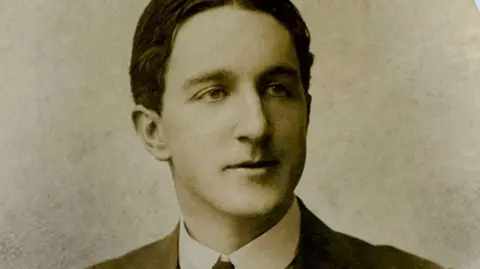 Libby MacRae
Libby MacRaeScottish soldier Donnie MacRae died as a German prisoner of war during World War Two - but it was not until almost 80 years later that his family discovered he had been buried without his brain.
Donnie died in a PoW hospital in 1941 and because he had suffered with a rare neurological condition an autopsy was performed on his body.
During the post-mortem, his brain and part of his spinal cord were removed and sent to the Kaiser Wilhelm Institute for Psychiatry in Munich to be used for research.
His body was buried by the Germans and later reburied by the Allies in the Commonwealth War Graves cemetery in Berlin but no-one knew his brain had been removed.
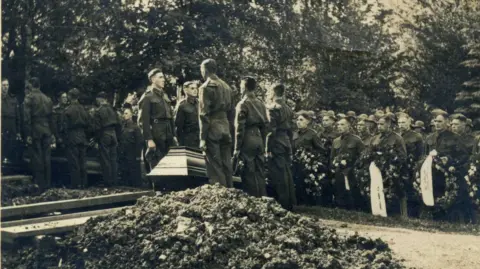 Libby MacRae
Libby MacRaeIn total, about 160 small slices of Donnie's brain and spinal cord have been kept in the archives of the Munich research centre - since renamed the Max Planck Institute for Psychiatry - ever since.
A BBC Radio 4 documentary - Shadow of War: A Tainted Anatomy - looks at why this happened and at the work being carried out to reunite the remains with the soldier in his grave.
Donnie MacRae grew up as a Gaelic speaker in Gairloch on the west coast of Scotland.
The family were music lovers, with a strong tradition of bagpiping, and they were all talented tailors, including Donnie.
He had plans to use hand-woven tweeds from his home village to set up his own tailoring business in Blair Atholl in Perthshire, where his brother lived and worked as a chauffeur at a local hotel.
However, in 1939, with the country on the brink of war, Donnie joined the Territorial Army and was called up to fight.
He was a private with the Seaforth Highlanders and was captured as a prisoner of war while fighting at St Valery, France, in June 1940.
He died the following year, at the age of 33, in a prisoner of war camp hospital.
Though the MacRae family knew of Donnie's capture and death, they were never informed about an autopsy, or about samples being taken from his brain.
It was only in 2020, when Prof Paul Weindling from Oxford Brookes University got in touch, that his niece Libby MacRae learned what had happened after Donnie's death.
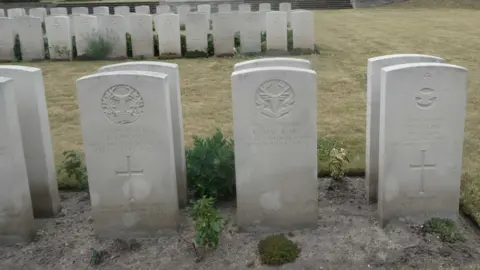 Paul Weindling
Paul WeindlingProf Weindling is part of an international group of researchers who are examining records of thousands of brains that were held at the Max Planck Society in Germany.
The aim of the project is to identify all the victims and to commemorate them properly.
"One overlooked group is certainly prisoners of war whose brains were taken for neuropathological research by the Germans and stockpiled for many, many years," Prof Weindling says.
The Germans wanted to be at the forefront of medical research and the reason why Donnie's brain ended up at the institute in Munich lies in the manner of his death.
When he was captured he had been wounded by a rifle bullet in the left knee and back.
Although the wound healed he was later readmitted to hospital where his condition deteriorated quickly in the following months.
Rare condition
At first he had double vision, tingling in his fingertips and difficulty speaking.
This rapidly led to paralysis in both arms and an inability to speak.
In the days before his death he was unable to move.
Donnie died on 6 March 1941 of a rare condition called Landry's Paralysis - known in the UK as the Guillain-Barré syndrome - where the immune system attacks the nervous system.
It is usually not fatal and, as a result, an autopsy was undertaken, including a dissection of his brain.
Dr Sabine Hildebrandt, a lecturer at Harvard Medical School with a keen interest in the ethics of the period, told the BBC it was an "excruciating fact" that removing tissue after death was not unusual.
"I'm not saying that they were ethically correct, but they were within the routine process of scientific work at the time," Dr Hildebrandt says.
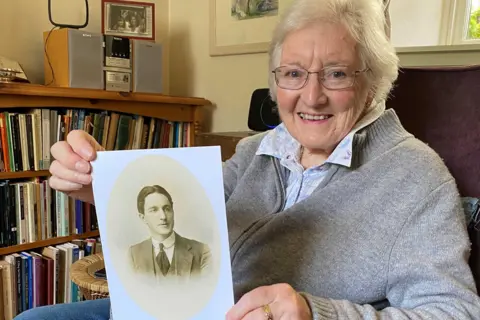
The slices of Donnie's brain and spinal cord were fixed in a solution and put on to glass microscope slides to be used for research into his condition.
His niece Libby says: "It's difficult to say what it feels like.
"I think it's pretty horrible, actually, to think about it."
As well as Donnie, Prof Weindling and his team uncovered records of four other British prisoners of war who had their brains removed and held for research purposes during 1941.
They were Patrick O'Connell, Donald McPhail, Joseph Elston and William Lancaster.
Until very recently, none of the families of the men had any idea what had happened to their relatives.
They were among about 2,000 brains that were taken for research by the leading Berlin and Munich institutes during World War Two, including those of children killed during the Holocaust.
The victims also included Polish Jews and Catholics, those with mental illness, political prisoners, Belgian resistance fighters and French and Polish soldiers.
Other German institutes are also known to have harvested body parts for research.
Dr Hildebrandt says the output of research from the German institutes was vast, and researchers across the world were "envious" of the volume of work coming out of the country.
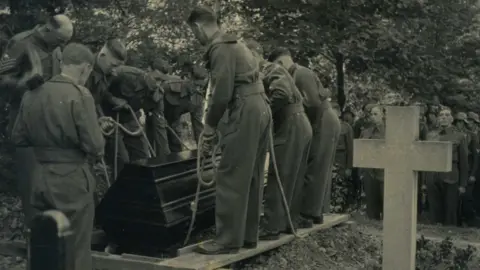 Libby MacRae
Libby MacRaeAfter the war, the Allies investigated the true nature of Nazi crimes and the resulting Nuremberg Trial saw nearly 200 people convicted of war crimes.
However, the Kaiser Wilhelm research institutes and those anatomists involved were allowed to continue their work.
This was in part due to the fact that, although it is now considered deeply unethical to keep human tissue without consent, at the time it was the norm.
However, questions arise over why nothing was done for so long about material held in German archives.
In the late 1980s there was a push from the German government to get rid of any specimens that had been "sourced" during World War Two, in particular any samples from persecuted groups.
There was to be a mass burial of hundreds of thousands of slides in Munich and a short deadline of just a few months was set.
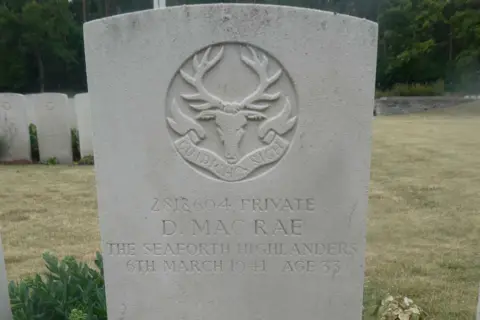 Paul Weindling
Paul WeindlingProf Heinz Wässle, who was head of the neurological department of the Max Planck Institute for Brain Research in Berlin at the time, said there was pressure to act extremely quickly.
"We were not able in short notice to find out which of the sections were from victims and which were just ordinary neuropathological material, therefore our decision was to bury all the sections from 1933 to 1945."
However, the Munich institute chose a different policy.
It only buried those with suspected links to the so-called euthanasia programmes, which referred to the systematic killing of those the Nazis deemed "unworthy of life" because of alleged genetic diseases or defects.
Many slides, considered to be of scientific interest, were retained.
The samples of Donnie MacRae were held for research purposes until 2015, when they were then put into an archive collection.
Now, more than 80 years after his death, work is under way to reunite this material with the rest of Donnie's remains in his war grave in Berlin.
Gaelic grave inscription
Prof Weindling and his colleagues have been connecting microscope samples with patient records, and contacting the next of kin.
The Commonwealth War Graves Commission recently agreed to accept Donnie's brain and spinal cord samples from the Max Planck Institute and reunite them with the remains already buried at their cemetery in Berlin.
"We are hoping this will mean we are in the position to re-inter the remains later this year," they said.
Libby says she hopes the painful situation is close to finally being resolved.
"I'm so glad to hear that the Commonwealth War Graves Commission will eventually bury the specimens, and all of Donnie will be together in a peaceful place," she said.
Her wish is to see a new Gaelic inscription on Donnie's grave in Berlin - "Faodaidh an saoghal tighinn gu crìch ach mairidh gaol is ceòl gu bràth".
It translates as: "The world may come to an end, but love and music will last forever."
